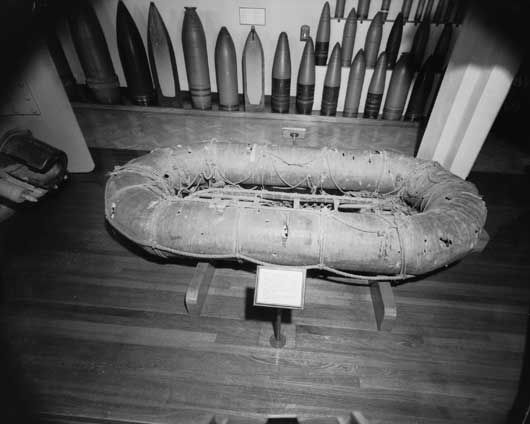Indian Ocean The Mystery of HMAS Sydney, 1941
The Battle in Brief
Throughout both world wars, a great number of allied merchant ships sailed across the Indian Ocean, transporting troops and war materials to and from Australia. The Royal Australian Navy performed patrol and escort duties for an area that witnessed attacks by German and Japanese warships and submarines. In the First World War the most famous action was in late 1914 when HMAS Sydney surprised and sunk the German light cruiser Emden.
In the Second World War, HMAS Sydney II first saw action in the Mediterranean and after returning to Australia in February 1941 was based at Fremantle. The Sydney left Fremantle on 11 November 1941 escorting the troopship Zealandia. On 17 November, Sydney handed over escort duties of Zealandia to HMS Durban at Sunda Strait, then headed back to Fremantle. German surface raiders had already been active in both the Indian and Pacific Oceans and it was expected that Australian naval vessels would investigate suspicious vessels. At about 4 pm on 19 November, west of Shark Bay, Western Australia, Sydney sighted and challenged a merchant ship about 20 kilometres distant. Although the ship identified itself as the Dutch ship Straat Malakka, it was the German merchant raider Kormoran. The Sydney closed to within 1,000 metres and was surprised and overwhelmed when the heavily armed raider opened fire at nearly point-blank range with concealed guns and torpedoes. The Kormoran was also badly damaged in the ensuing battle and had to be abandoned and scuttled. Survivors from the Kormoran reported that the Sydney was last seen down by the bow and on fire as she disappeared over the horizon. There were no survivors from the Sydney’s 645 crew members and her wreckage and that of the Kormoran were not discovered until March 2008.
A Japanese striking force of five aircraft carriers with 300 aircraft on board, escorted by battleships, cruisers and destroyers. entered the Indian Ocean on 3 April 1942 with the objective of destroying British naval and air force facilities in Ceylon (now Sri Lanka). Fifty Japanese bombers with a fighter escort raided Colombo on the morning of 5 April with little success. However, later that day, 300 kilometres south of the island, the British cruisers Cornwall and Dorsetshire were located and sunk within little more than fifteen minutes with the loss of 424 lives. Four days later Japanese aircraft raided the naval base at Trincomalee destroying shore facilities and nearly forty British aircraft. Later that day, the British aircraft carrier Hermes escorted by the Australian destroyer Vampire were spotted by the Japanese and were soon under attack. Both ships were sunk and nine Australians lost their lives. A British hospital ship, Vita, was able to pluck 590 survivors from both ships out of the sea and brought them to Colombo.
Location
Media



